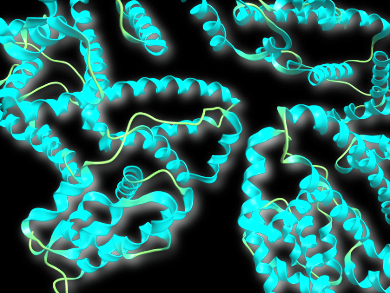Tiny chemical sensors that tackle big targets have been developed by A. Prasanna de Silva and colleagues, Queen’s University, Belfast, UK. The sensors focus on biological targets; receptor proteins in particular.
The concept of fluorescent photoinduced electron transfer (PET) sensing/switching is a useful tool for over 350 laboratories around the world. So far, such sensors have exploited metal ion coordination, reversible covalent bonding involving saccharides, and irreversible covalent bonding. Such sensors can not only detect individual atoms or compounds, but can be used to measure cell membrane potential, environmental polarity, and enzyme activity.
However, there was always one specific type of target that was not accessible. De Silva’s team has changed that. They have demonstrated that rather specific receptor proteins and non-specific transport proteins can be exploited within the fluorescent PET sensing design. As a proof of principle, they have shown how such sensors function with avidin and bovine serum albumin (BSA), respectively.
Protein Targets
Avidin is a tetrameric biotin-binding protein found in egg white. Its interactions with biotin, vitamin B7, have been used in a range of biotechnologies, such as DELFIA assays, where emissive lanthanide-labeled (strept)avidin is used to bind biotinylated proteins. Critically, biotin is known to enter a β-barrel of avidin. As such, it becomes isolated from the surrounding bulk water. The researchers point out that such isolation can be associated with a switching effect, whereby departure from the polar environment and entry into the apolar interior can act to switch on fluorescence. The process blocks the charge-separating PET process that would otherwise occur and stifle any fluorescence. A similar effect has been used where a PET acceptor-avidin conjugate has been stuck on a carbon nanotube to quench its fluorescence.
The team has now developed sensor structures that exploit this phenomenon and that target specific proteins, such as avidin and BSA. The small molecules used are based on designed chromophores that can be bound to the target protein (the analyte), and their fluorescence is switched on only when they interact with the target. The team has shown that two of their sensor molecules work well in detecting avidin at low levels in a sample. Two other sensors are suitable for BSA, however, this protein must be present at 30 times higher concentration, so more sensitive sensors are needed in this case.
Wide-Ranging Chromophores
The researchers point out that there is a wide range of chromophores that could be used as fluorescence switches in this way. Indeed, it might even be possible to design a highly specific sensor for almost any target protein and they suggest that their system is a general one. “We conclude that the fluorescent PET sensing/switching approach is a design platform for targeting proteins,” the team states. The use of a ligand that allows them to attach an off-on fluorescent molecule covalently to a target protein in a precise location that allows for the aforementioned switching effectively extends the reach of fluorescent PET sensing/switching systems.
The next step could be to carry out detailed laser photolysis experiments to clarify the mechanism of the various processes taking place during targeting, switching, and fluorescence. The ultimate aim is to optimize the fluorescent PET systems and to facilitate the design of others for different biological targets of interest.
- Lighting-up protein–ligand interactions with fluorescent PET (photoinduced electron transfer) sensor designs,
Bernard McLaughlin, Esther M. Surender, Glenn D. Wright, Brian Daly, A. Prasanna de Silva,
Chem. Commun. 2018.
https://doi.org/10.1039/c7cc05929a




